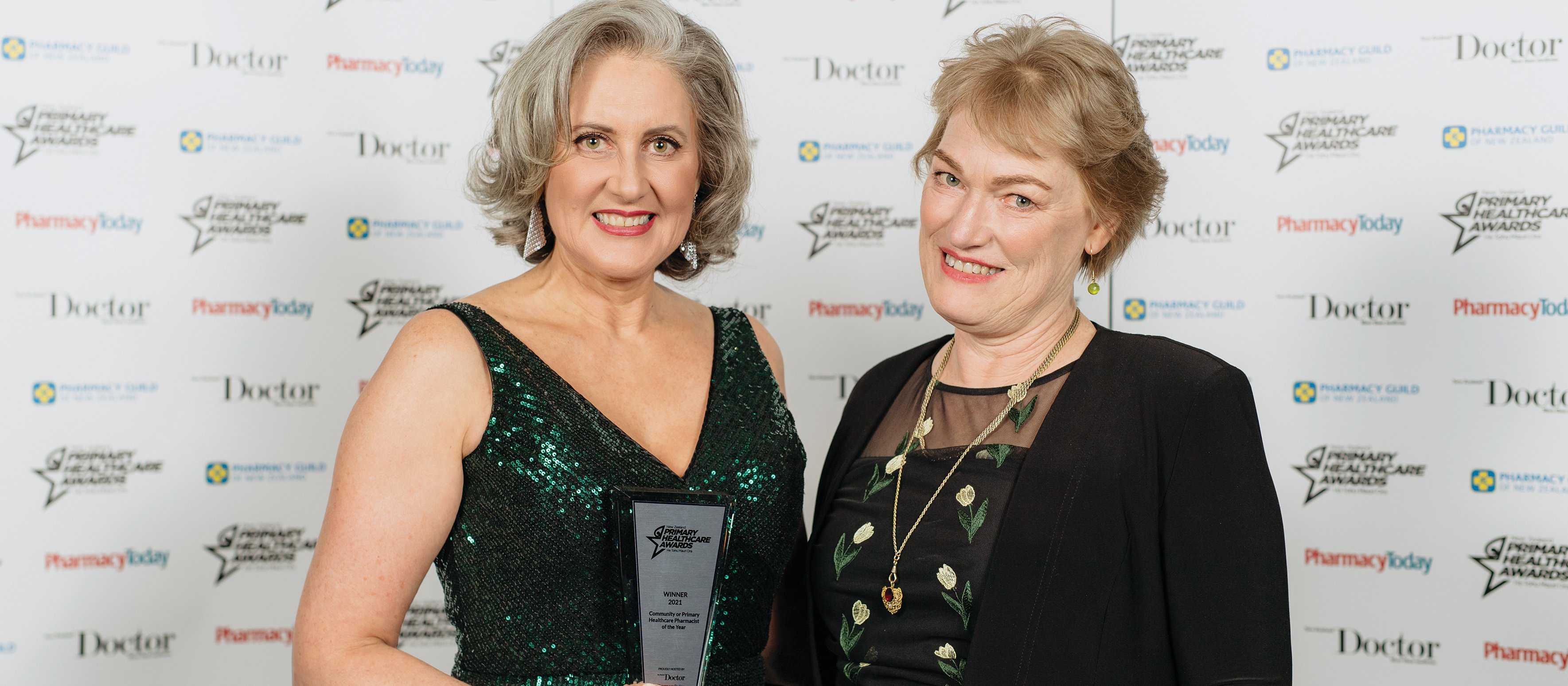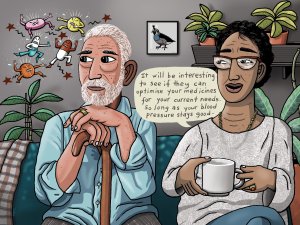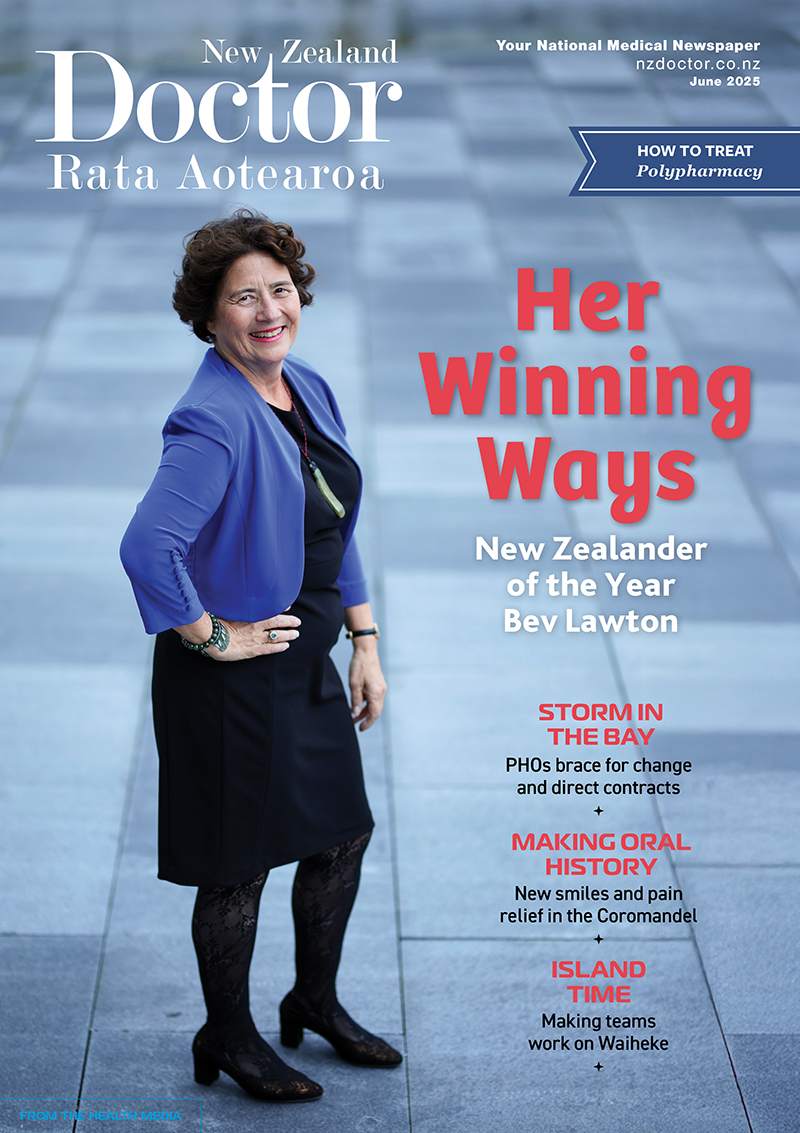For older people and frail people, the long-term benefit of medicines reduces and the potential for harm from adverse effects increases. When the benefit–risk balance changes in this way, medicine review and optimisation are important to simplify the therapeutic regimen, reduce inappropriate medicines and minimise risks. In this article, pharmacist prescriber Linda Bryant uses two case studies to illustrate important considerations during medicine reviews
Fighting the invisible problem of medicine harm
Wednesday 26 May 2021, 02:00 AM

Pauline McQuoid from Medwise and Clare Perry, deputy director-general, health system improvement and innovation, Ministry of Health
COMMUNITY OR PRIMARY HEALTHCARE PHARMACIST
This award recognises a community pharmacist who has made an outstanding contribution to customer health through their excellence in clinical pharmacy practice. They will have an outstanding commitment to equity in health outcomes and demonstrated professional leadership, imagination and innovation to achieve better outcomes and foster the growth and development of other community pharmacists
WINNER
PAULINE MCQUOID
Severe medicine-related harm is estimated to affect around 45,000 New Zealanders each year and kills more than double the
Kia ora and welcome to New Zealand Doctor Rata Aotearoa
Not a subscriber? Unlock this article by subscribing here.



